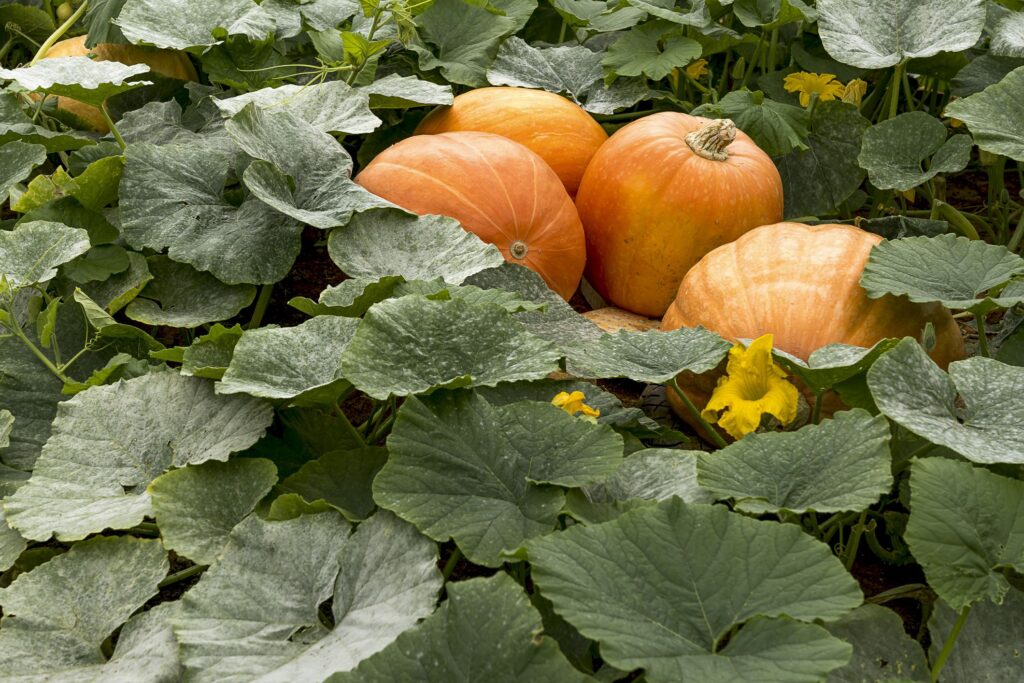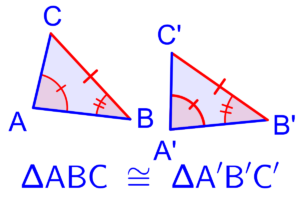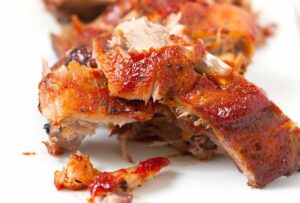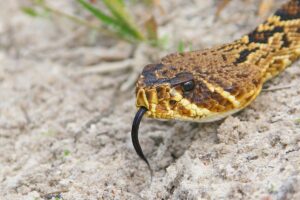
I.Introduction
A. Definition of a Pumpkin Plant
In the vast tapestry of botanical diversity, the pumpkin plant stands as an emblem of autumnal abundance. Belonging to the Cucurbitaceae family, the pumpkin plant, scientifically known as Cucurbita, encompasses various species characterized by their sprawling vines and distinctive fruits.
B. Importance of Understanding Pumpkin Plant Characteristics
As stewards of the land and enthusiasts of nature’s bounty, comprehending the visual attributes of a pumpkin plant is paramount. From cultivation practices to botanical appreciation, familiarity with its features enriches our connection to the natural world.
C. Overview of Pumpkin Plant Structure
The anatomy of a pumpkin plant comprises external features that catch the eye, internal structures that sustain growth, and a lifecycle marked by distinct stages. Delving into these elements unveils the intricate beauty and functionality of the pumpkin plant.
II. External Features of a Pumpkin Plant
A. Leaves
- Size and Shape
Pumpkin leaves exhibit a generous size and characteristic lobed shape, resembling an outstretched hand eager to embrace sunlight. Their dimensions vary, with mature leaves spanning several inches in width and length.
- Texture and Color
The texture of pumpkin leaves is akin to coarse fabric, bearing a surface adorned with veins that map intricate pathways for nutrient transport. Their coloration ranges from deep emerald to hues of silver-green, hinting at the plant’s vitality.
- Vein Patterns
Veins crisscrossing pumpkin leaves form mesmerizing patterns reminiscent of ancient scripts, each line a conduit for life-sustaining fluids. These intricate networks underscore the plant’s efficiency in nutrient absorption and distribution.
B. Stem
- Thickness and Texture
The stem of a pumpkin plant embodies resilience, its girth expanding with the weight of burgeoning fruits. Its texture is rugged yet supple, offering a tactile reminder of nature’s strength and adaptability.
- Color and Surface Features
From verdant green to shades of mottled brown, the coloration of a pumpkin stem mirrors the changing seasons, a testament to the plant’s cyclical journey. Surface features such as subtle ridges and fine hairs add character to its visage.
- Growth Habit
Pumpkin stems display a remarkable flexibility, their tendrils reaching and stretching in pursuit of sunlight and space. Whether trailing along the ground or scaling trellises, their growth habit epitomizes botanical ingenuity.
C. Flowers
- Appearance
Pumpkin flowers, delicate in form yet robust in purpose, adorn the vine with bursts of golden-yellow brilliance. Each petal, a masterpiece of nature’s design, beckons pollinators to partake in the plant’s reproductive dance.
- Location on the Plant
Emerging from leaf axils with graceful poise, pumpkin flowers punctuate the verdant canopy with ephemeral beauty. Their strategic positioning ensures maximum exposure to pollinators traversing the garden landscape.
- Function
Beyond their aesthetic allure, pumpkin flowers serve a vital role in the plant’s lifecycle, facilitating the transfer of pollen essential for fruit formation. Their ephemeral presence heralds the promise of future harvests and sustenance.
III. Internal Anatomy of a Pumpkin Plant
A. Root System
- Primary and Secondary Roots
Beneath the soil’s surface, the root system of a pumpkin plant extends like a subterranean tapestry, weaving a network of primary and secondary roots. Primary roots anchor the plant, while secondary roots explore the depths in search of sustenance.
- Root Hair Distribution
Root hairs, microscopic extensions of the root epidermis, adorn the root system like fine hairs on a delicate tapestry. Their abundance increases surface area for nutrient absorption, ensuring the plant’s vitality.
- Function of Roots
The roots of a pumpkin plant serve as silent sentinels, absorbing water and minerals essential for growth and development. They also engage in symbiotic relationships with soil microorganisms, exchanging nutrients for mutual benefit.
B. Vascular System
- Xylem and Phloem
Within the vascular system of a pumpkin plant, xylem and phloem vessels form a lifeline for nutrient transport. Xylem channels water and minerals from roots to shoots, while phloem transports sugars and other metabolites to fuel growth.
- Transport of Water and Nutrients
Through a process akin to nature’s plumbing, the vascular system of a pumpkin plant facilitates the upward movement of water and nutrients. This hydraulic transport system ensures the plant’s physiological needs are met.
- Supportive Role
Beyond nutrient transport, the vascular system provides structural support, maintaining turgor pressure and rigidity. Its role in maintaining plant integrity cannot be overstated, ensuring resilience in the face of environmental challenges.
C. Fruit Development
- Ovary Structure
At the heart of pumpkin fruit development lies the ovary, a botanical sanctuary where seeds find refuge. From its embryonic state, the ovary matures into a fleshy receptacle, ready to cradle life within its protective embrace.
- Pollination Process
The pollination dance of pumpkin plants is orchestrated by nature’s maestros, with bees and other pollinators serving as willing accomplices. Their delicate touch ensures the transfer of pollen from male to female flowers, setting the stage for fruit formation.
- Growth and Maturation
As the ovary swells with the promise of new life, the pumpkin fruit embarks on a journey of growth and maturation. From tiny beginnings to plump fruition, each stage is a testament to nature’s bounty and the plant’s nurturing embrace.
IV. Growth Stages of a Pumpkin Plant
A. Seed Germination
- Conditions for Germination
In the dark recesses of soil, pumpkin seeds await their moment of awakening, craving moisture, warmth, and oxygen. Under favorable conditions, the miracle of germination unfolds, signaling the dawn of a new life.
- Emergence of Seedling
Like a phoenix rising from the ashes, the pumpkin seedling emerges from its earthly cocoon, unfurling cotyledons as harbingers of photosynthetic prowess. With each passing day, its roots delve deeper into the soil, anchoring it to the land.
- Establishment of Roots
Roots, the silent architects of plant vitality, extend their reach in search of sustenance, weaving a tapestry of life beneath the soil’s surface. Their intricate dance ensures the seedling’s survival and heralds the promise of future growth.
B. Vegetative Growth
- Leaf Expansion
As the pumpkin plant enters its vegetative phase, leaves unfurl like verdant banners, capturing sunlight with outstretched arms. Each leaf, a factory of photosynthesis, fuels the plant’s growth and vitality.
- Stem Elongation
Meanwhile, the stem of the pumpkin plant embarks on a journey of upward mobility, stretching towards the heavens with unwavering determination. Its tendrils reach and grasp, anchoring the plant to trellises and supports with tenacious resolve.
- Flower Initiation
Amidst the lush foliage, buds of promise emerge, signaling the onset of floral abundance. Each flower, a beacon of hope, invites pollinators to partake in the plant’s reproductive dance, ensuring the continuity of life.
C. Reproductive Phase
- Flowering
With the arrival of spring’s warmth, pumpkin flowers burst forth in a riot of color, painting the landscape with golden hues. Bees, nature’s messengers, flit from bloom to bloom, carrying tales of love and life in their pollen-laden embrace.
- Fruit Setting
As pollination takes place, the ovary of the pumpkin flower swells with the promise of future bounty. Like a mother cradling her unborn child, the plant nurtures the developing fruit, ensuring its growth and maturation.
- Fruit Ripening
With the passage of time, the pumpkin fruit ripens, its skin transforming from green to hues of orange and gold. Each day brings new flavors and aromas, a testament to nature’s bounty and the plant’s nurturing embrace.
V. Conclusion
A. Recap of Key Points
In conclusion, the pumpkin plant is a testament to nature’s ingenuity and resilience, its anatomy and lifecycle a marvel of botanical complexity. From its external features to its internal structures, each aspect contributes to its vitality and beauty.
B. Appreciation of Pumpkin Plant Diversity
As we marvel at the diversity of pumpkin plants, let us pause to appreciate their role in our lives and ecosystems. Whether adorning our gardens or gracing our tables, they enrich our world with their abundance and beauty.
C. Encouragement for Further Exploration
As we conclude our exploration of the pumpkin plant, let us remain curious and open to the wonders of nature. Whether as gardeners, scientists, or nature enthusiasts, there is always more to discover and appreciate in the intricate tapestry of life.




